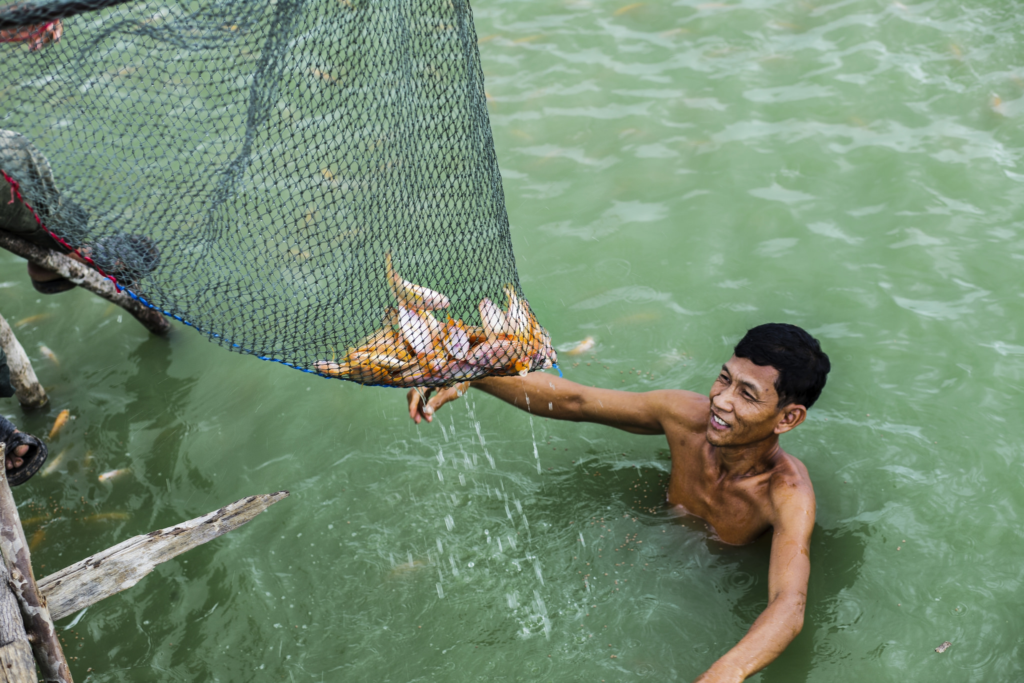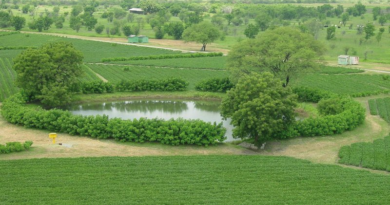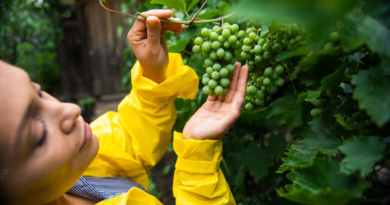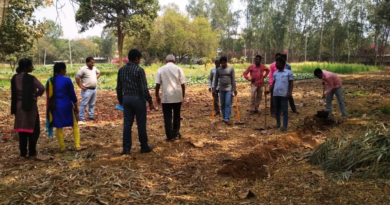Marine Capture Fisherman cum Primary Processor 6 month course
Marine Capture Fisherman CLICK HERE
 Fisherman Fishery: Also known as ‘Fisher’, the Marine fisherman catches and catches a variety of marine life such as human food, animal feed, temptation, and other uses.
Fisherman Fishery: Also known as ‘Fisher’, the Marine fisherman catches and catches a variety of marine life such as human food, animal feed, temptation, and other uses.
Short Description Description: Each person manages using a variety of equipment, selecting appropriate techniques and methods, fishing and marine life and marine board management for public consumption etc. of the main fish products.
Your Qualities: Work requires a person with: hand and finger fitness, swimming skills, visual acuity, attention to detail, distraction and distraction sounds, physical, mental and mechanical, multi-limbed, signal response, weight lifting, good hand strength and stamina and the ability to work long hours at sea, in the hot sun and other natural resources Marine Capture Fisherman .

Perform pre fishing activities Marine Capture Fisherman :
In order to be effective, each user / individual must be able to:
PC1. determine the species to be held depending on the climate and climate, region and their availability for the
PC2 season. select the appropriate mode from the active and manual gears depending on the recording type and the trip length of the
PC3. adjust and modify the net according to the selected method and type of
PC4 capture types. determine the size of the hook and the type of bait to be used depending on the type of fish designed to catch
PC5. select trap nets for mesh size used
PC6. select the match size according to the type and range of size for
PC7. determine the appropriate photography method that has led to high productivity Determining handicrafts To be competent, the user / individual must be able to:
PC8. has decided on specific and costly handicrafts that will be used for fishing from both mechanical or non-mechanical
PC9 species. take the necessary steps and learn about the weather before the arrest of
PC10. use mechanical and non-mechanical boats
PC11. equip fishing boats with consumable long-term seawater
PC12. make sure the boats contain refrigerators to keep the fish clean until they return to shore Preparing the net and other equipment In order for a person to work properly, the user / person must be able to:
PC13. fix fishing gear such as nets, pots, traps, spears and dredges
PC14. ensure that rod, rod, line, hooks and trap, lumps, plows, jars, shovels and wire traps can withstand harsh conditions and strong
PC15 fish. load and unload shipping equipment and equipment, manually or using
PC16 lifting equipment. pull and steer nets, traps, and lines into ships, manually or using lifting equipment Verifying preparatory activities To be competent, user / individual must be able to:
PC17. make sure the weather is good for
PC18 fishing. oversees procurement of goods, gear and equipment such as fuel, net and cables

PC19. obtain the required fishing permits and
PC20 licenses. research and familiarize yourself with the habits and behaviors of the target species, the natural habitat of the fish to increase their chances of catching a large
PC21. understand eating and breeding habits in the fish species planned to be caught by
PC22. have navigation awareness, navigation, maritime safety, navigation, vessel repair, and
PC23 fishing gear technology. estimate operating costs and plan fishing season budgets Marine Capture Fisherman

Organizational Context (Knowledge of the company / organization and its processes) Marine Capture Fisherman :
The user / person at work needs to know and understand:
KA1. applicable law, standards, policies, and procedures in the workplace
KA2. appropriate health and safety requirements applicable to workplace
KA3. your role and responsibilities and job information resources
KA4. who can request assistance to obtain work-related information, specifications and
KA5 funding. the importance of compliance with health, hygiene, safety and quality standards and the impact of non-compliance on consumer and business KA6. documents and related procedures applicable to the context of the work Marine Capture Fisherman
Technical Knowledge:

The person at work needs to know and understand:
KB1. fishing methods and techniques
KB2. fishing handicrafts that you can use for different types
KB3. active gear methods and synthetic gears
KB4. active gears such as trawling catches, net netting, wallet wrapping, writing and harpoon ways to catch
KB5. gears made like gill net, long membrane, jumping and holding
KB6. a type of equipment such as a hand fishing boat, a metal fishing boat and a boat, a fishing boat, gill netter and its performance and basic maintenance of
KB7. non-mechanized boat types such as catamaran, rowing boats, wooden boats and their performance
KB8. species and their natural environment for determining the right path, art and machinery of
KB9. mechanical and non-mechanical art
KB10. net change by type size
KB11. Weather and its conditions
KB12. marine and communications equipment, GPS, radar and sonar to catch fish and avoid obstacles above and below water
KB13. heavy fish catching equipment and equipment
KB14. use of life jackets and other safety items
KB15. laws and regulations to be followed in accordance with the standards in the fishing industry
Core Skills/Generic Skills:
The user / person at work needs to know and understand: how to do
SA1. read the resource manual and process documentation to understand the operation of the machine and the process Writing skills User / employee needs to know and understand: the path to
SA2. record and store information by recording, marketing, weather and other required information Oral communication (Listening and Speaking Skills) The user / person at work needs to know and understand: the path to
SA3. communicating with clients and fishers collaboratively through marketing and linking to their needs and concerns
B. Developing Professional Skills Creating a user / employee need to know and understand: how to
SB1. how to make decisions about the methods and techniques that will be used for Planning and Planning The user / person at work needs to know and understand: how to
SB2. planning the type, methods and techniques to use
SB3. planning
SB4 capture preparation activities. use nets, pots, traps, spears and
SB5 fish rivers. use life-jackets, flash lights, boat lights,
SB6 paddles. use steering vessels and
SB7 navigation equipment. use stick, rod, line, hook and line, cones, erasers, hooks, shovels and telephone traps to withstand harsh conditions and strong fish Medium Customer The user / person at work needs to know and understand:
SB8 method. manage relationships with workers and other farmers in partnership with
SB9. to go and use the tour shown SB10. build relationships and use people’s problem-solving approach The user / person at work needs to know and understand: how to
SB12. think about the problem, explore possible solutions (s) and use the largest / best solution (s)
SB13. identify problems quickly and take solutions to solve Analytical thinking delays The user / person at work needs to know and understand: the SB14 method. tracking and storing the equipment and equipment required for the various operations of the farm Marine Capture Fisherman
Capture the fish:
In order to be effective, each user / individual must be able to:
PC1. use rowing boats, fishing boats or fishing boats, divers and
PC2 hookers. install fishing equipment in the water and anchor or towing equipment, according to the
PC3 fishing method used. catch fish using
PC4 fish catching machines. use fishing gear to pull and pull nets and lines, and then release the catch on
PC5 line nets or hooks. use dip nets to prevent the escape of small fish and gaffs to facilitate the arrival of large fish
PC6. navigating and using marine tools Taking the necessary safety measures To be competent, a user / individual must be able to:
PC7. prepare adequate emergencies for
PC8 boats. have enough
PC9 security equipment. confirm first aid kits or necessary measures to prevent
PC10 drowning. get used to handling fish in the deep sea Gain Productivity To be effective, the user / individual must be able to:
PC11. catch high value fish that get a good
PC12. ensure that the catch value exceeds the operating costs involved and results in a profit

A. Organizational Context (Knowledge of the company / organization and its processes):
The user / person at work needs to know and understand:
KA1. applicable law, standards, policies, and procedures in the workplace
KA2. appropriate health and safety requirements applicable to workplace
KA3. your job role and responsibilities and resources about
KA4 work. who can request assistance to obtain work-related information, specifications and
KA5 funding. the importance of compliance with health, hygiene, safety and quality standards and the impact of non-compliance by consumers and businesses Marine Capture Fisherman
Technical Knowledge Marine Capture Fisherman :
KB1. fishing methods and techniques
KB2. the handicraft activities you will use depending on the selected species and the
KB3 climate. sailing, navigation, maritime safety, navigation, ship repair, and
KB4 fishing gear technology. operation of dip nets and gaff nets
KB5. sailing and navigating ships
KB6. using nets and other
KB7 equipment. equipment and tools, including their design, use, repair, and maintenance of
KB8. safety precautions to be taken for illness and risk of entering the sea
KB9. type of natural habitat
KB10. laws and regulations to be followed in accordance with the standards in the fishing industry
Core Skills/ Generic Skills:
The user / person at work needs to know and understand: how to do
SA1. read the textbooks and processing documents to understand the operation of the tools and the process that requires Learning Skills The user / person at work needs to know and understand: the path to
SA2. record and store information by recording, marketing, weather and other required information Oral communication (Listening and Speaking Skills) The user / person at work needs to know and understand: the path to
SA3. liaising with clients and fishers in partnership to catch fish and its essential needs.
B. Practicing Professional Skills The user / employee needs to know and understand:
SB1 method. make a decision about the Capture Program and edit The user / person at work needs to know and understand: how to make
SB2. use of nets, pots, traps, spears and fish sticks
SB3. use of life jackets, flash lights, boat lights,
SB4 paddles. use of rod, wheel, line, hooks and trap, lumps, rakes, hoes, shovels and wire trap to withstand harsh conditions and strong
SB5 fish. of compasses, charts and electronic navigation equipment, including global positioning systems (GPS), radar and sonar to catch fish and avoid obstacles above and below the
SB6. use steering ships and navigation equipment
SB7. use the arms and legs and move the whole body doing physical activities such as climbing, lifting, balancing, walking, holding, swimming and handling
SB8 objects. sophisticated tools and navigate boats to where the highest concentration of fish is found Customer Centricity The user / person at work needs to know and understand:
SB9. manage fishing relationships in partnership with
SB10. manage relationships with workers and other farmers in partnership with
SB11. build relationships and use the human centric
SB12 method. attending and using the indicated visit Problem Solving The user / person at work needs to know and understand:
SB13 method. identify problems quickly and take solutions to solve analytical skills delays (Analytical Skills measure the quality and quantity of their catch
SB15. take your own performance and personal learning Marine Capture Fisherman

Perform post fishing activities Marine Capture Fisherman :
In order to be effective, each user / individual must be able to:
PC1. keep engines, fishing gear, and other equipment on board by performing minor
PC2 repairs. ensure that the goods are clear and clean at all times and that the engine and machinery of the ship are kept in good working condition
PC3. adjust fishing gear, marine engines, equipment, nets and equipment when required for
PC4. wash tables, carriers, knives, etc., using brushes, water purifiers, water handling and handling In order to operate properly, the user / individual must be able to:
PC5. remove the catch for fishing equipment and measure it to ensure compliance with the official
PC6 size. comply with hygiene management practices – GMP and SSOP
PC7 standards. perform an organoleptic test for
PC8 capture. process the fish caught in the boat and prepare to sell
PC9. sort the types according to purchasing capabilities or customer requirements for
PC10. wash and store frozen fish to bring them back to shore for sale on
PC11. perform basic activities associated with cold, cold, drying etc.
PC12 Make sure the fish are kept fresh after being caught until
PC13 is sold. transport fish when processing plants or to consumers
PC14. adherence to HACCP procedures during key management / processing
PC15. sell fish to communicate and negotiate with customers or through the Fish Document Document To be effective, the user / individual must be able to:
PC16. record in specific fishing activity books such as dates, harvest locations, harvest, and weather and sea conditions
A. Organizational Context (Knowledge of the company / organization and its processes):
The user / person at work needs to know and understand:
KA1. applicable law, standards, policies, and procedures in the workplace
KA2. appropriate health and safety requirements applicable to
KA3 workplace. your job role and responsibilities and resources about
KA4 work. who can request assistance to obtain work-related information, specifications and
KA5 funding. the importance of compliance with health, hygiene, safety and quality standards and the impact of non-compliance on consumer and business
KA6. documents and related procedures applicable to the context of the work
Technical Knowledge Marine Capture Fisherman :
The person at work needs to know and understand:
KB1. The terms of sale and export of
KB2 fish. materials, holding procedures, quality control, cost, and other strategies to increase the effective number of holdings and distribution of assets
KB3. equipment and tools, including their design, use, repair and maintenance of
KB4. retaining the techniques of caught fish using ice and salt
KB5. utensils and soaps to use for floor care
KB6. type of natural habitat
KB7. the basic methods of preservation are; cold, freezing and freezing
KB8. the importance of adhering to good hygiene
KB9. domestic and international standards and the importance of adhering to the same
KB10. GMP and SSOP procedures and ideas for HACCP
KB11. laws and regulations to be followed in accordance with the standards in the fishing industry Marine Capture Fisherman
Core Skills/ Generic Skills:
The user / person at work needs to know and understand: how to do
SA1. read the resource manual and process documents to understand the functioning of the tools and the process of learning Learning skills The user / person at work needs to know and understand: how to
SA2. record and store information by recording, marketing, weather and other required information Oral communication (Listening and Speaking Skills) The user / person at work needs to know and understand: the path to
SA3. communicating with clients and fishers collaboratively by marketing and communicating their needs and concerns
B. Developing Professional Skills To create a user / employee need to know and understand: the
SB1 approach. relevant information and individual judgment to determine whether the process complies with the rules, regulations or standards in the
SB2 fishery. to make a decision about
of planting
Plan and Organize The user / person at work needs to know and understand: how to make
SB3. negotiate price and other items with
SB4 buyers. he also sold the market for his capture of
SB5. perform routine maintenance and determine when and what type of maintenance is required The User / Employee needs to know and understand: how to
SB6. manage relationships with workers and other neighboring farmers Problem Solving The user / employee needs to know and understand:
SB7 method. analyze data and test results to choose the best solution and solve problems Analytical Thinking The user / person at work needs to know and understand: how to
SB8. view and store the equipment and equipment needed for seed treatment and seed preparation and crèche bedding Critical Thinking The user / person at work needs to know and understand:
SB9 method. take your own performance and personal learning Marine Capture Fisherman
Guidelines for Assessment:
- Criteria for assessment for each Qualification Pack will be created by the Sector Skill Council. Each Performance Criteria (PC)
will be assigned marks proportional to its importance in NOS. SSC will also lay down proportion of marks for Theory and Skills
Practical for each PC. - The assessment for the theory part will be based on knowledge bank of questions created by the SSC .
- Assessment will be conducted for all compulsory NOS, and where applicable, on the selected elective/option NOS/set of
NOS. - Individual assessment agencies will create unique question papers for theory part for each candidate at each
examination/training center (as per assessment criteria below). - Individual assessment agencies will create unique evaluations for skill practical for every student at each
examination/training center based on this criterion. - To pass the Qualification Pack , every trainee should score a minimum of 70% of aggregate marks to successfully clear the
assessment. - In case of unsuccessful completion, the trainee may seek reassessment on the Qualification Pack







